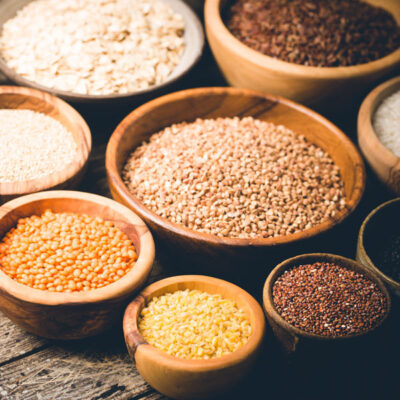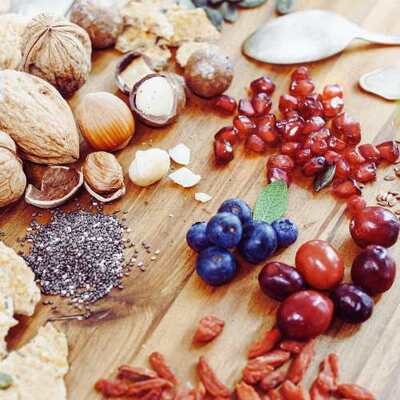What Is Spelt Flour and How Is It Different from Regular Flour?
Author: Admin Date Posted:22 May 2025

Are you ready to switch to spelt? What is spelt flour? Discover the health benefits and how it compares to regular flour. Learn how to bake with spelt using these expert tips.
If you're a baking enthusiast or simply looking for healthier alternatives, you've probably come across this ancient grain. But exactly what is spelt flour? How does it differ from standard all-purpose flour, and why is it gaining so much popularity? In this post, we cover everything from its origins to how it behaves in baking. By the end, you'll be equipped to decide whether spelt deserves a spot in your pantry.
What is Spelt?
Spelt is one of the oldest cultivated grains, tracing its roots back to ancient civilisations in Europe. It belongs to the wheat family, but unlike modern wheat, it has undergone minimal hybridisation, making it closer to its natural form.
How Spelt Is Grown and Processed
Spelt is grown organically in many regions, primarily in Europe and North America. Its tough outer husk provides natural protection, making it less reliant on pesticides during cultivation. Post-harvest, the husk is removed, and the grain is milled into flour through processes that retain its nutrient content.
Is Spelt Flour Gluten Free?
No, spelt is not gluten-free.
As an ancient grain that belongs to the wheat family, like all wheat species, it naturally contains gluten. Gluten is the protein responsible for the elasticity in dough, which is useful (often essential) for baking, but it can be problematic for individuals with certain dietary restrictions or health conditions.
For people with celiac disease, spelt is not a safe alternative to gluten-containing grains because it triggers the same adverse immune response as other wheat products. Additionally, those with non-celiac gluten sensitivity may also experience discomfort when consuming spelt, as the gluten content can still cause symptoms such as bloating, abdominal pain, or fatigue.
However, it’s worth noting that spelt's gluten structure is slightly different from that of modern wheat. Some people who are not dealing with strict gluten intolerance may find spelt easier to digest due to its simpler gluten composition.
On the whole, though, spelt cannot be classified as gluten-free and should be avoided by anyone following a gluten-free diet.
Nutritional Profile
Spelt flour is considered to be highly nutritious. Here’s how it compares with regular wheat flour.
Spelt contains around 12-15% protein, which is marginally higher than wheat. It is a source of complete protein, which means it contains all nine essential amino acids. Protein is essential for tissue repair and enzyme production. It also provides satiety and supports weight management.
Spelt flour is an excellent source of dietary fibre, which plays a crucial role in maintaining healthy digestion. It contains slightly higher fibre levels than regular wheat flour, helping to support gut health and promote a feeling of fullness after meals. This makes it a great choice for those looking to improve their digestive wellness or manage weight. The fibre in spelt also contributes to stabilising blood sugar levels, making it a beneficial option for people monitoring their glycemic intake.
Spelt flour is particularly rich in B vitamins, including niacin (B3), which supports energy production and a healthy nervous system. Additionally, spelt flour contains significant amounts of iron, essential for red blood cell production, and magnesium, which plays a key role in maintaining muscle and nerve function.
Other important minerals found in spelt include zinc, phosphorus, and manganese, all of which contribute to bone health, immune support, and metabolic processes. This nutrient-dense profile makes spelt flour a wholesome option in balanced diets.
Compared to all-purpose wheat flour, spelt flour is less refined and retains more of its natural goodness.
Is Spelt Flour Organic?
Spelt can be grown using organic farming methods, but not all spelt flour available on the market is automatically organic.
Organic flour comes from spelt crops that are grown without synthetic pesticides, herbicides, or chemical fertilisers. Instead, organic farmers rely on natural, more traditional methods like crop rotation, composting, and biological pest control to care for their crops.
Read our article on the benefits of organic flour vs conventional flour.
It's worth noting that even without being certified organic, spelt is often considered a more sustainable crop because it is hardy, requires fewer inputs, and adapts well to natural farming conditions. It is also often milled using far less intensive production methods.
Our spelt flour is certified organic, and our spelt granola is also organic.
What Is Whole Grain Spelt Flour?
Whole grain spelt flour is made by grinding the entire spelt grain, including the bran, germ, and endosperm. This process preserves all the nutrients, fibre, and natural flavours found in spelt, making it a wholesome and nutritious option for baking and cooking.
Packed with protein, vitamins, and minerals, whole grain spelt flour is a popular choice for those seeking a more natural and nutrient-rich alternative to conventional flours.
Try our organic whole grain spelt flour
What Is White Spelt Flour?
White spelt flour is made by milling spelt grain but removing the bran and germ during the process, leaving only the starchy endosperm. This results in a lighter flour with a finer texture, making it an excellent choice for recipes that require a more delicate crumb, such as pastries, cakes, and certain types of bread.
Although it contains fewer nutrients and fibre compared to whole grain spelt flour, white spelt flour still retains some of spelt's natural nutritional benefits, including protein and a range of vitamins and minerals.
It's a versatile option for those who want the mild, slightly nutty flavour of spelt in a more refined form.
Try our organic white spelt flour
Why not experiment with both types, depending on your recipe? For example, swap 25% of regular flour in your bread with whole grain spelt for added texture.
Health Benefits of Spelt Flour
Spelt flour is often considered to be a healthier choice than regular wheat flour.
Digestibility and Gluten Sensitivity
It contains gluten, but in a different structure than modern wheat, making it easier to digest for some people. However, spelt is not suitable for those with celiac disease.
Heart Health
The magnesium in spelt can help regulate heart rhythms and blood pressure. Additionally, its higher fibre content can improve cholesterol levels.
Blood Sugar Control
Due to its moderate glycaemic index, spelt flour can cause a slower, steadier rise in blood sugar compared to refined flour. This makes it a better option for managing energy throughout the day.
What Is Spelt Flour Used For?
A versatile ingredient that can be used as an alternative to regular wheat flour in many recipes. Its slightly nutty and sweet flavour makes it increasingly a favourite among bakers. You’ll often find it used in baking breads, pastries, cookies, and cakes. Because of its lower gluten content, spelt flour creates a softer, tender texture, which is particularly appealing for baked goods like muffins or pancakes and is a popular flour for cakes.
Beyond baking, it can also be used in savoury recipes. It’s a great base for homemade pasta, pizza dough, or flatbreads, offering more depth of flavour compared to white or all-purpose flour. For those who enjoy experimenting in the kitchen, spelt flour can bring a rustic appeal and subtle earthiness to dishes.
Baking with Spelt Flour
Spelt flour absorbs less water and is more tender than regular flour. Doughs and batters made with spelt may be softer, so keep these points in mind when using it.
Spelt dough typically requires about 25% less water than wheat dough. Adding liquid gradually is key. Over-kneading spelt dough can compromise its structure, so handle it gently to preserve its gluten.
How To Substitute Spelt Flour for Wheat Flour
When substituting for wheat flour, start by using it in a 1:1 ratio by weight in recipes.
Because spelt absorbs less water, you’ll want to reduce the liquid in the recipe by about 10-25%, adding it back gradually if needed.
Additionally, monitor how much you mix or knead the dough, as overworking it can lead to a crumbly texture.
Since spelt has a more delicate gluten structure, recipes like bread or pizza dough may require more advanced adjustments. For best results, try substituting spelt in recipes like muffins, cookies, or pancakes before tackling more complex baked goods.
Recipe Idea
Try our healthy banana muffin recipe, which uses a mix of wholemeal spelt and white spelt flour for a perfect blend of nutrition and lightness.
How Spelt Differs from Regular Flour
It has several unique characteristics.
Texture
Spelt has a softer and more delicate texture compared to wheat flour. It creates baked goods with a tender crumb.
Flavour
Expect a nutty, slightly sweet flavour with spelt. This makes it excellent for adding depth to recipes.
Gluten Content
Spelt gluten is weaker than that of regular wheat. Which is great for cakes, but maybe not so great for bread.
Potential Drawbacks
When we are so used to the cheap accessibility of modern wheat flour, there may be some potential drawbacks to consider when switching to spelt.
Cost
It often tends to be more expensive than regular flour due to its lower production levels and organic or minimal intervention farming practices.
Gluten Suitability
While spelt is easier to digest for some, it’s not a solution for those with gluten intolerance or celiac disease.
The Learning Curve
Beginners may find spelt challenging to work with due to its unique behaviour. Maybe start with small substitutions in recipes before fully committing.
A final word
If you’re looking for a nutritious, less processed flour alternative and are open to experimenting, spelt is well worth a try. You may find it earns a permanent place in your baking arsenal. Why not start small and try using it in your favourite pancake or bread recipe? Its nutty profile and digestibility may just win you over.
Have you seen our other healthy baking ingredients?
Learn more about healthy baking in our article 'Getting Started with Healthy Baking'.



